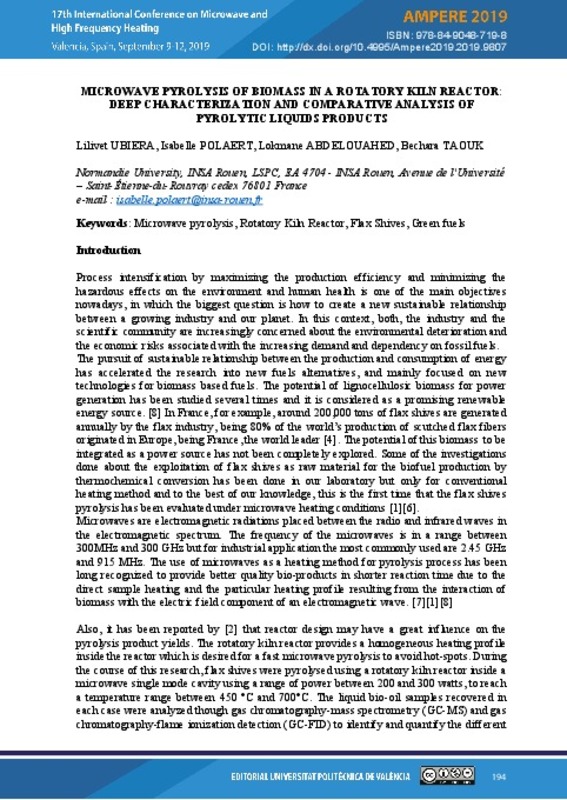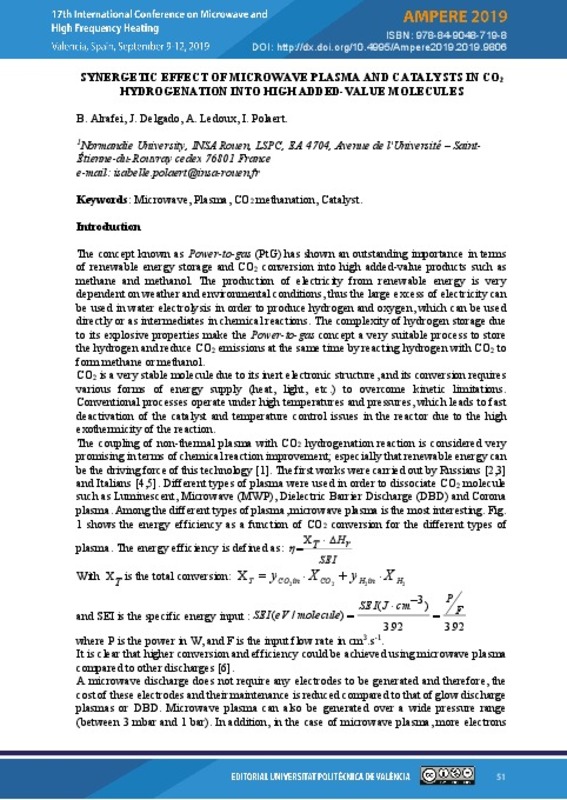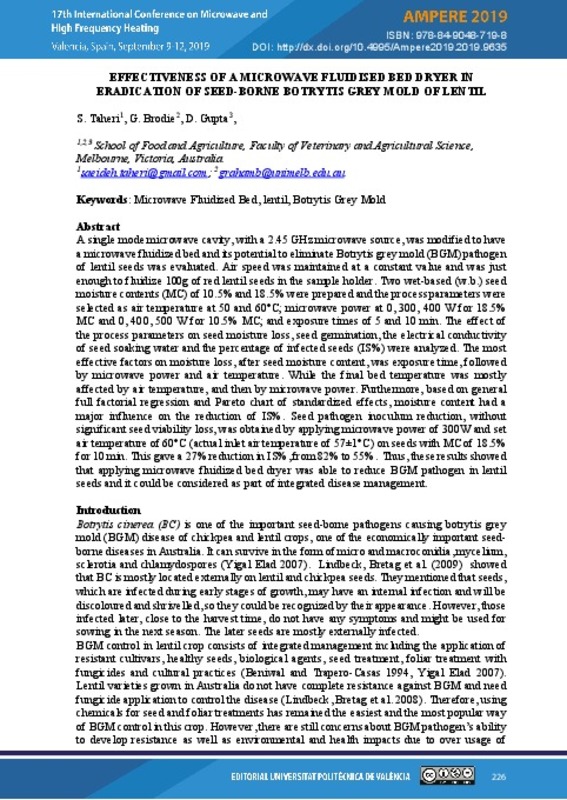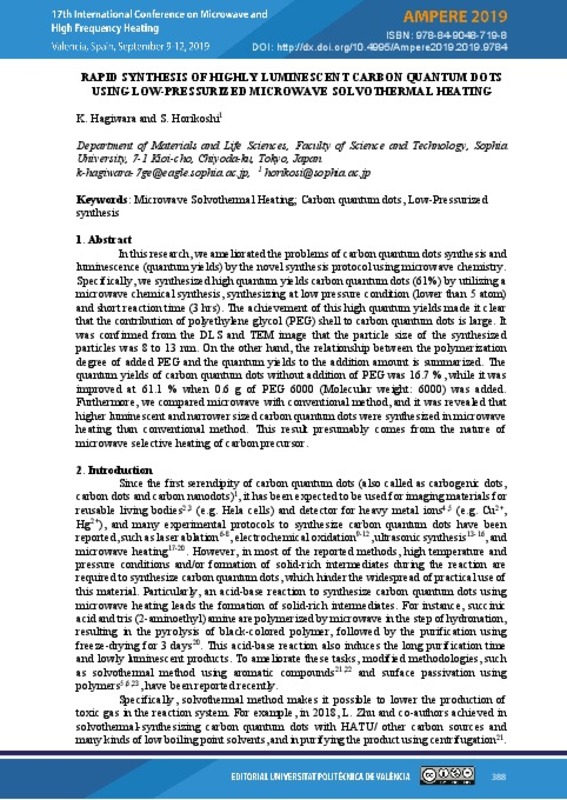JavaScript is disabled for your browser. Some features of this site may not work without it.
Buscar en RiuNet
Listar
Mi cuenta
Estadísticas
Ayuda RiuNet
Admin. UPV
Microwave pyrolysis of biomass in a rotatory kiln reactor: deep characterization and comparative analysis of pyrolytic liquids products
Mostrar el registro sencillo del ítem
Ficheros en el ítem
| dc.contributor.author | Ubiera, Lilivet
|
es_ES |
| dc.contributor.author | Polaert, Isabelle
|
es_ES |
| dc.contributor.author | Abdelouahed, Lokmane
|
es_ES |
| dc.contributor.author | Taouk, Bechara
|
es_ES |
| dc.date.accessioned | 2019-11-11T13:41:43Z | |
| dc.date.available | 2019-11-11T13:41:43Z | |
| dc.date.issued | 2019-10-15 | |
| dc.identifier.isbn | 9788490487198 | |
| dc.identifier.uri | http://hdl.handle.net/10251/130722 | |
| dc.description.abstract | [EN] The pursuit of sustainable relationship between the production and consumption of energy has accelerated the research into new fuels alternatives, and mainly focused on new technologies for biomass based fuels. Microwave pyrolysis of biomass is a relatively new process which has been long recognized to provide better quality bio-products in shorter reaction time due to the direct sample heating and the particular heating profile resulting from the interaction of biomass with the electric field component of an electromagnetic wave [1,2]. During the course of this research, flax shives were pyrolysed using a rotatory kiln reactor inside a microwave single mode cavity using a range of power between 100 and 200 watts, to reach a temperature range between 450 °C and 650°C. The liquid bio-oil samples recovered in each case were analyzed though gas chromatography-mass spectrometry (GC-MS) and gas chromatography-flame ionization detection (GC-FID) to identify and quantify the different molecules presents and paying a particular attention to the BTX’s concentration. More than two hundred compounds were identified and grouped into families such as carboxylic acids, alcools, sugars for a deep analysis of the results. The effect of the operating conditions on the proportion of gas, liquid and char produced were studied as well as some properties of the pyrolysis products. In most cases, carboxylic acids were the dominating chemical group present. It was also noticed that the increase of temperature enhanced the carboxylic acids production and diminished the production of other groups, as sugars. Finally, pyrolysis oils were produced in higher quantities by microwaves than in a classical oven and showed a different composition. The examination of the pyrolytic liquid products from different biomass components helped to determine the provenance of each molecule family. On the operational side, the rotatory kiln reactor provided a fast and homogeneous heating profile inside the reactor, desired for fast pyrolysis. The high temperature was maintained without making hot spots during the reaction time. The microwave irradiation setup consisted in a single-mode cavity, a system of plungers, incident and reflected power monitors, an isolator and a 2.45 GHz continuous microwave generator with a power upper limit of 2000 watts. The plunger system was calibrated to maintain a range of reflective wave between 5 and 15%, taking advantage of a minimum of 85 percent of the applied power. In conclusion, the developed microwave pyrolysis process gives a clear way to produce an exploitable bio-oil with enhanced properties. References Beneroso, D., Monti, T., Kostas, E., Robinson, J., CEJ, 2017.,316, 481- 498. Autunes E., Jacob M., Brodie, G., Schneider, A., JAAP, 2018,129, 93-100. | es_ES |
| dc.format.extent | 9 | es_ES |
| dc.language | Inglés | es_ES |
| dc.publisher | Editorial Universitat Politècnica de València | es_ES |
| dc.relation.ispartof | AMPERE 2019. 17th International Conference on Microwave and High Frequency Heating | es_ES |
| dc.rights | Reconocimiento - No comercial - Sin obra derivada (by-nc-nd) | es_ES |
| dc.subject | Energy Production by Microwaves | es_ES |
| dc.subject | Microwave CVD | es_ES |
| dc.subject | EM Modelling | es_ES |
| dc.subject | Microwave Material interaction | es_ES |
| dc.subject | Dielectric Properties | es_ES |
| dc.subject | Dielectric Properties Measurement | es_ES |
| dc.subject | Solid State Microwave | es_ES |
| dc.subject | Microwave Processing | es_ES |
| dc.subject | Microwave Chemistry | es_ES |
| dc.subject | Microwave applicators design | es_ES |
| dc.title | Microwave pyrolysis of biomass in a rotatory kiln reactor: deep characterization and comparative analysis of pyrolytic liquids products | es_ES |
| dc.type | Capítulo de libro | es_ES |
| dc.type | Comunicación en congreso | es_ES |
| dc.identifier.doi | 10.4995/AMPERE2019.2019.9807 | |
| dc.rights.accessRights | Abierto | es_ES |
| dc.description.bibliographicCitation | Ubiera, L.; Polaert, I.; Abdelouahed, L.; Taouk, B. (2019). Microwave pyrolysis of biomass in a rotatory kiln reactor: deep characterization and comparative analysis of pyrolytic liquids products. En AMPERE 2019. 17th International Conference on Microwave and High Frequency Heating. Editorial Universitat Politècnica de València. 194-202. https://doi.org/10.4995/AMPERE2019.2019.9807 | es_ES |
| dc.description.accrualMethod | OCS | es_ES |
| dc.relation.conferencename | Ampere 2019 | es_ES |
| dc.relation.conferencedate | Septiembre 09-12,2019 | es_ES |
| dc.relation.conferenceplace | Valencia, Spain | es_ES |
| dc.relation.publisherversion | http://ocs.editorial.upv.es/index.php/AMPERE2019/AMPERE2019/paper/view/9807 | es_ES |
| dc.description.upvformatpinicio | 194 | es_ES |
| dc.description.upvformatpfin | 202 | es_ES |
| dc.type.version | info:eu-repo/semantics/publishedVersion | es_ES |
| dc.relation.pasarela | OCS\9807 | es_ES |
Este ítem aparece en la(s) siguiente(s) colección(ones)
-
Ampere 2019 [66]











